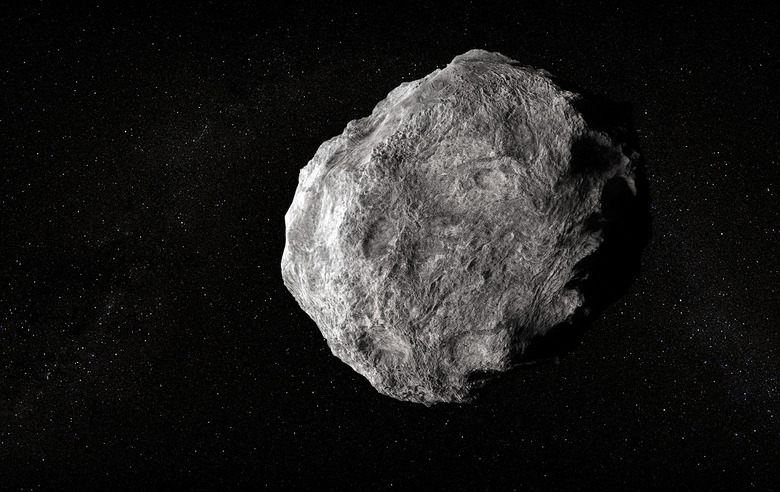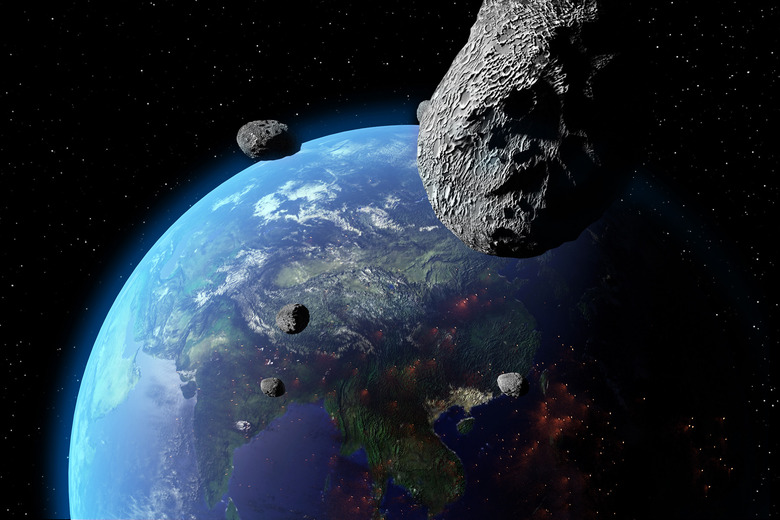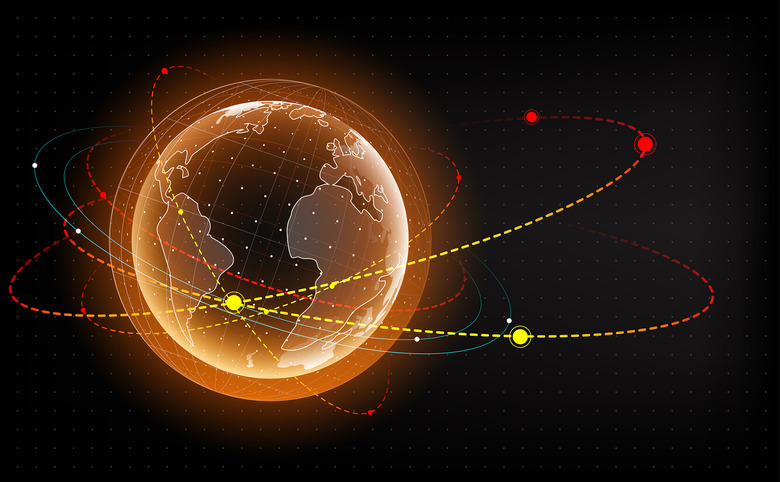A 'Potentially Hazardous' Asteroid Will Zoom Past Earth This Week
NASA expects a potentially hazardous asteroid to zoom past Earth later this week. The asteroid's approach can be seen in more detail on the NEO Earth Close Approaches list, which NASA keeps updated. Based on observations, the asteroid is between 42 to 92 feet in diameter. It will zoom past the Earth at more than 20,000 mph, but it won't pose any threat to our planet.
A potentially hazardous asteroid will zoom past Earth this week
Astronomers named the asteroid in question 2015 FF. At its closest approach, the asteroid will travel at around 27 times the speed of sound, Livescience notes. Additionally, it will come within around 2.67 million miles of the Earth. That's roughly eight times the average distance between Earth and its Moon. It won't pose a direct threat to Earth, but such an approach by a potentially hazardous asteroid is concerning.
Just because the asteroid isn't aimed at Earth doesn't make it any less dangerous. And any asteroid labeled as "potentially hazardous" isn't necessarily a danger to Earth. NASA just labels any celestial object that comes within 120 million miles of Earth as a near-Earth object. Additionally, any object that comes within 4.65 million miles is considered potentially hazardous. That's where 2015 FF lands.
The asteroid itself doesn't pose a threat to Earth at the moment. But, a potentially hazardous asteroid of the same size, with a route that takes it into a direct impact with Earth could pose a lot of danger to cities. Currently, NASA knows the orbit of around 28,000 asteroids. It keeps track of all of these asteroids so that astronomers can watch them as they pass and for any signs of danger.
Fighting hazardous space objects
2015 FF might not pose a direct threat, but there may one day be an asteroid that does. When that happens, we'll need to be prepared to deal with potentially hazardous asteroids in new ways. One way that NASA has come up with to combat this kind of thing is a redirection system. The space agency will test its D.A.R.T system this year, which will try to redirect an asteroid in a few months.
Of course, we'll have to wait and see how that goes, but other space agencies are working on similar systems. As well as systems that can detect and monitor potentially hazardous asteroids.


